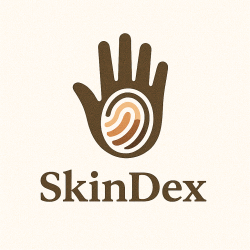In 2022, over 9 million Botox injections were given worldwide, making it one of the most popular cosmetic treatments today. Known for its ability to reduce wrinkles and give skin a smoother, younger appearance, Botox is particularly popular among celebrities looking to maintain a youthful appearance. But what exactly is Botox, and how does it work?
What is Botox?
Botulinum toxin, or Botox, is a neurotoxic protein derived from a bacteria known as bacterium Clostridium botulinum. Neurotoxic proteins are substances that disrupt the function of the nervous system. Botulinum toxin works by blocking the release of acetylcholine, a neurotransmitter that plays a critical role in muscle contraction, by interfering with the vesicles responsible for releasing acetylcholine. Located in neurons, vesicles are small sacs that store neurotransmitters, like acetylcholine. Botox targets and breaks down the proteins that help these vesicles release acetylcholine, preventing it from being released into the space between the nerve and the muscle.
This prevention of muscle contraction ultimately leads to reduced wrinkles, fine lines, improved skin texture, and overall a more youthful appearance.
While Botox is best known for its cosmetic benefits, it also provides several other medical benefits. This versatile procedure can also mitigate neck spasms and chronic migraines under the same mechanism. Additionally, Botox is effective in treating excessive sweating (hyperhidrosis). Not only is acetylcholine responsible for muscle contraction, but it also plays a key role in triggering sweat production in sweat glands. Botox can be injected in the affected areas, preventing them from producing excess sweat. Botox injections can also treat lazy eye by relaxing the overactive muscle in the eye—specifically, the extraocular muscle, which controls eye movement.
Different muscles vary in size and strength, so they require varying amounts of Botox to effectively relax the target muscle. Botox injections are administered in units, with 1 unit being a standardized measure of biological potency.
Where is Botox injected?
Botox can be used wherever facial muscles are creating lines. Here are the most common injection sites:
Forehead – to relax those horizontal lines that show up when you raise your eyebrows. 10-30 units of Botox.
Between eyebrows (glabella) – to soften the vertical lines caused by frowning. 5-15 units of Botox on each side.
Outer corners of eyes (crow’s feet) – to soften the orbicularis oculi muscles at the outer corners of the eyes. 10-15 units of Botox per side.
Around the mouth – to reduce smile lines (nasalabial folds) by pulling the corners of the mouth down. 3-6 units of Botox on each side.
How long does Botox last?
Botox injections generally last 3 to 4 months, depending on the dosage and site of injection. In areas with more muscle activity, like around the eyes or mouth, the effects of Botox will wear off faster compared to areas with less movement, like the forehead.
Side effects of Botox
As we’ve learned, Botox prevents the release of acetylcholine and ultimately muscle contraction. After injection, the targeted muscle remains entirely inactive for the treatment’s duration—typically 3 to 4 months. This prolonged inactivity can cause muscle atrophy, meaning that the muscle will reduce in mass, size, and strength. Some studies have shown that if a patient continues to undergo Botox injections in the long term, their skin might experience increased susceptibility to sun damage, premature aging, and dehydration. Granted, the current research on the long-term effects of Botox remains inconclusive.
Takeaway:
Known for its effective ability to smooth wrinkles by temporarily paralyzing facial muscles, Botox continues to reign as one of the most popular cosmetic treatments. Beyond aesthetics, Botox also treats medical conditions like migraines, excessive sweating, and muscle spasms. However, while generally safe, long-term use may lead to muscle atrophy and potential skin changes. As with any procedure, it’s important to weigh the benefits against possible risks and consult a healthcare provider for personalized care.
Bibliography
“Botox.” MedlinePlus, U.S. National Library of Medicine, 2 Aug. 2023, https://medlineplus.gov/botox.html.
“Vesicle.” NCI Dictionary of Cancer Terms, National Cancer Institute, https://www.cancer.gov/publications/dictionaries/cancer-terms/def/vesicle.
“What Areas Can Be Treated with Botox?” Westlake Dermatology & Cosmetic Surgery, https://www.westlakedermatology.com/blog/what-areas-can-be-treated-with-botox/.
“The Long-Term Effects of Botox: What Research Says.” Your Laser Skin Care, https://www.yourlaserskincare.com/blog/the-long-term-effects-of-botox-what-research-says.
